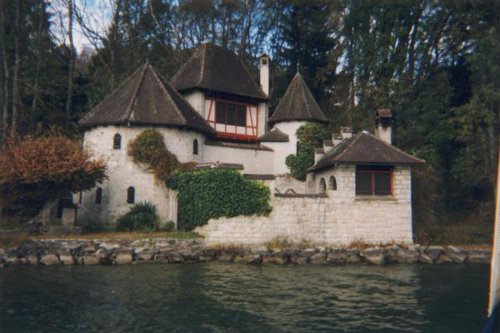
In 1922, after the death of his mother, Carl Jung felt “I had to achieve a kind of representation in stone of my innermost thoughts and of the knowledge I had acquired. Or, to put it another way, I had to make a confession of faith in stone.”
He began to build a structure on the shores of Lake Zurich in Switzerland. It began as a regular two-story house, “a maternal hearth,” but over the years he added a towerlike annex with a “retiring room” for withdrawal and contemplation, and a courtyard and loggia.
At 80, after his wife’s death, “I suddenly realized that the small central section which crouched so low, so hidden, was myself!” He added an upper story, an extension of his own personality no longer hidden behind the “maternal” and “spiritual” towers. “Now it signified an extension of consciousness achieved in old age. With that the building was complete.”
The final building, he saw, symbolized the structure of his own psyche, the full emergence of his personality in adulthood. “Unconsciously built at the time, only afterward did I see how all the parts fitted together and that a meaningful form had resulted: a symbol of psychic wholeness.” “At Bollingen,” he wrote, “I am in the midst of my true life, I am most deeply myself.”
